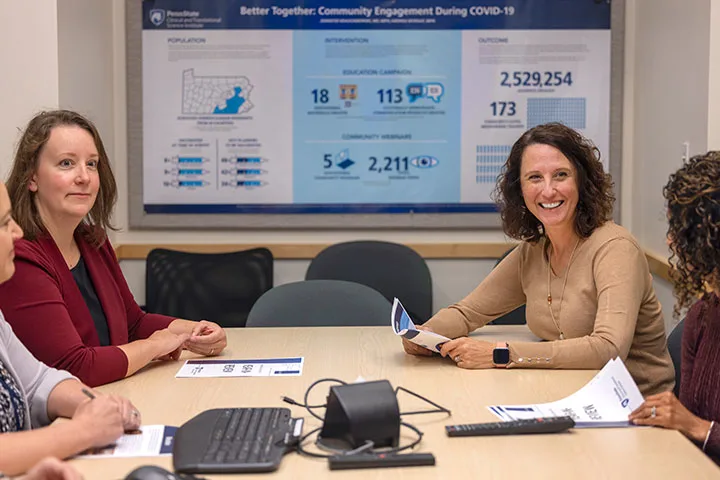Accelerating Research Discoveries to Improve Health Outcomes
Penn State CTSI advances translational science and scientists in partnership with communities to bring discoveries into practice.
Penn State Clinical and Translational Science Institute connects translational scientists and community partners to improve healthy living and health outcomes by supporting research infrastructure through funding, training and education, community engagement, and collaborative programs across Penn State University and the Commonwealth. Through its programs and resources, CTSI empowers researchers, clinicians, and students to accelerate research discoveries.
Explore CTSI Programs

Services & Resources
Expert advising/consultations, toolkits, and clinical resources to support your research.

Training & Fellowships
CTSI training programs and fellowships that prepare the next generation of translational scientists.
Connecting Research and Resources
Penn State Clinical and Translational Science Institute connects people, partners, and resources to improve health across Pennsylvania and beyond.
1,100+
hospitals and clinics in CTSI’s network.
490+
publications citing CTSI support.
1,000+
clinical trials conducted.

Project ECHO: Expanding access to high-quality care through virtual learning networks
Explore Project ECHO's current clinical and community programs aimed to improve practice and extend quality care.
Request Consultation
Not sure what service you need? Complete our consultation request form with as much detail as you can, and our team will follow up to guide you and connect you with the right support.




